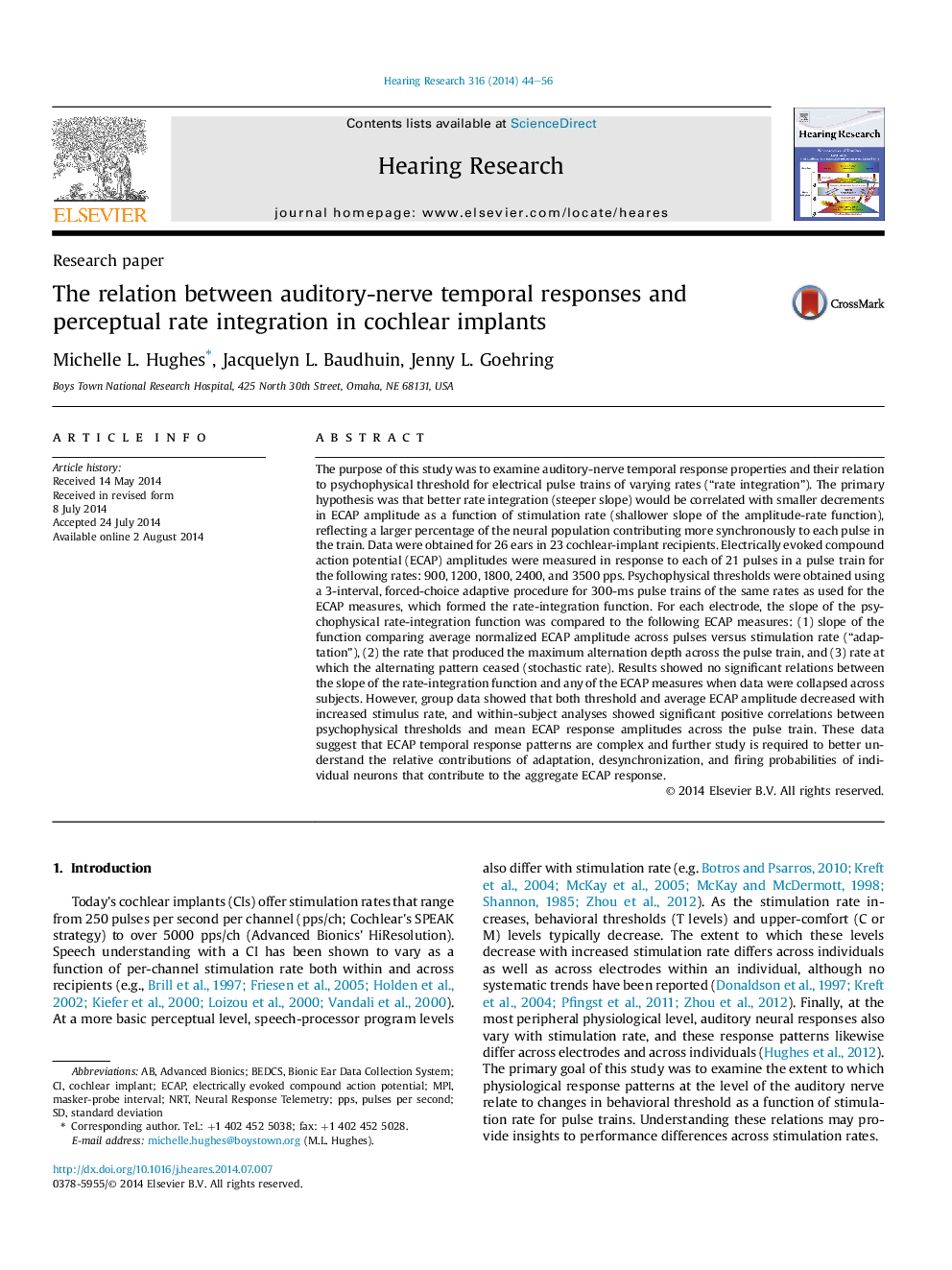| کد مقاله | کد نشریه | سال انتشار | مقاله انگلیسی | نسخه تمام متن |
|---|---|---|---|---|
| 6287416 | 1615584 | 2014 | 13 صفحه PDF | دانلود رایگان |
عنوان انگلیسی مقاله ISI
The relation between auditory-nerve temporal responses and perceptual rate integration in cochlear implants
ترجمه فارسی عنوان
ارتباط بین پاسخهای زمان شنوایی عصب و ادغام میزان ادراک در ایمپلنتهای کچلی
دانلود مقاله + سفارش ترجمه
دانلود مقاله ISI انگلیسی
رایگان برای ایرانیان
کلمات کلیدی
موضوعات مرتبط
علوم زیستی و بیوفناوری
علم عصب شناسی
سیستم های حسی
چکیده انگلیسی
The purpose of this study was to examine auditory-nerve temporal response properties and their relation to psychophysical threshold for electrical pulse trains of varying rates (“rate integration”). The primary hypothesis was that better rate integration (steeper slope) would be correlated with smaller decrements in ECAP amplitude as a function of stimulation rate (shallower slope of the amplitude-rate function), reflecting a larger percentage of the neural population contributing more synchronously to each pulse in the train. Data were obtained for 26 ears in 23 cochlear-implant recipients. Electrically evoked compound action potential (ECAP) amplitudes were measured in response to each of 21 pulses in a pulse train for the following rates: 900, 1200, 1800, 2400, and 3500Â pps. Psychophysical thresholds were obtained using a 3-interval, forced-choice adaptive procedure for 300-ms pulse trains of the same rates as used for the ECAP measures, which formed the rate-integration function. For each electrode, the slope of the psychophysical rate-integration function was compared to the following ECAP measures: (1) slope of the function comparing average normalized ECAP amplitude across pulses versus stimulation rate (“adaptation”), (2) the rate that produced the maximum alternation depth across the pulse train, and (3) rate at which the alternating pattern ceased (stochastic rate). Results showed no significant relations between the slope of the rate-integration function and any of the ECAP measures when data were collapsed across subjects. However, group data showed that both threshold and average ECAP amplitude decreased with increased stimulus rate, and within-subject analyses showed significant positive correlations between psychophysical thresholds and mean ECAP response amplitudes across the pulse train. These data suggest that ECAP temporal response patterns are complex and further study is required to better understand the relative contributions of adaptation, desynchronization, and firing probabilities of individual neurons that contribute to the aggregate ECAP response.
ناشر
Database: Elsevier - ScienceDirect (ساینس دایرکت)
Journal: Hearing Research - Volume 316, October 2014, Pages 44-56
Journal: Hearing Research - Volume 316, October 2014, Pages 44-56
نویسندگان
Michelle L. Hughes, Jacquelyn L. Baudhuin, Jenny L. Goehring,
